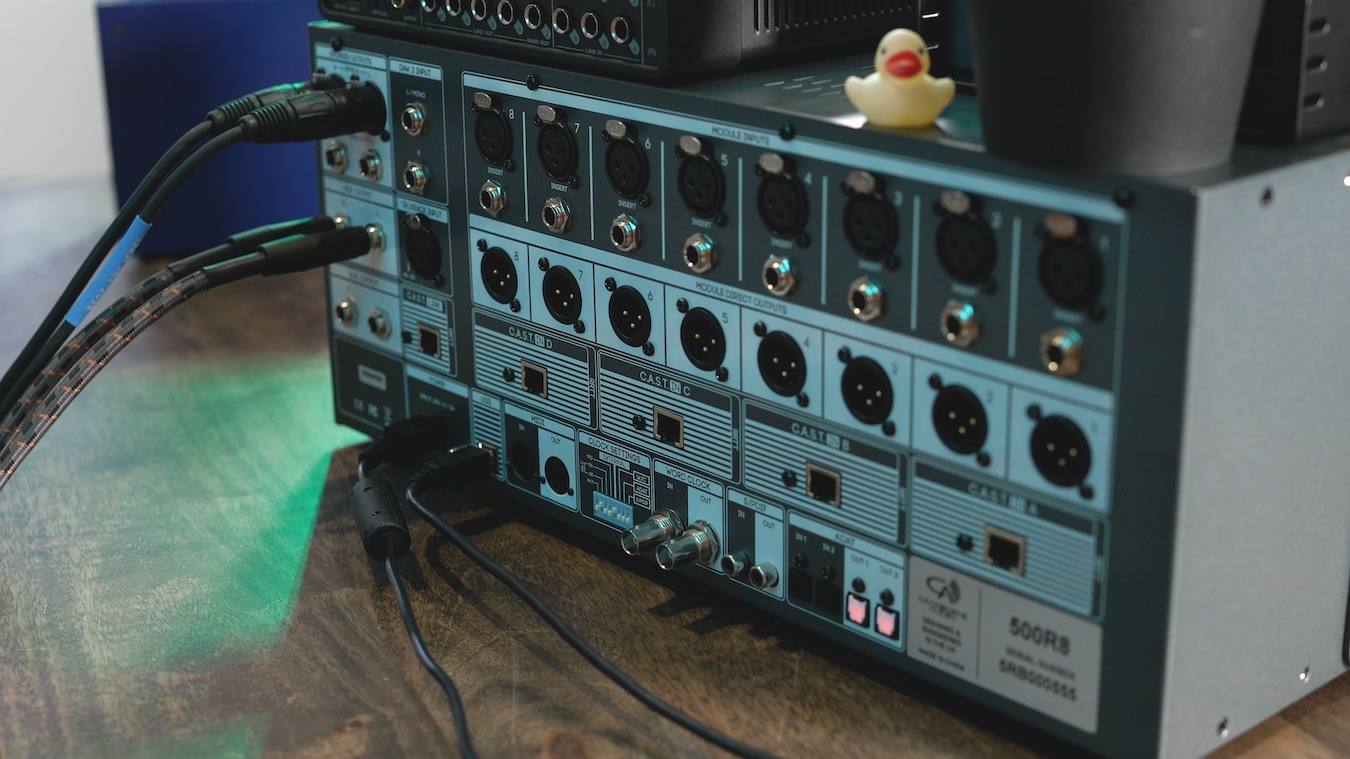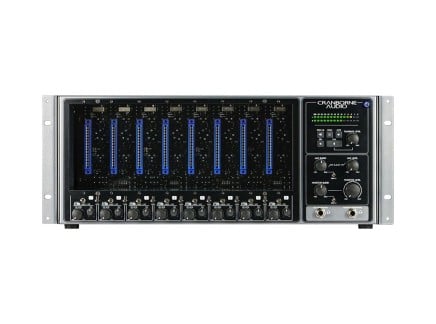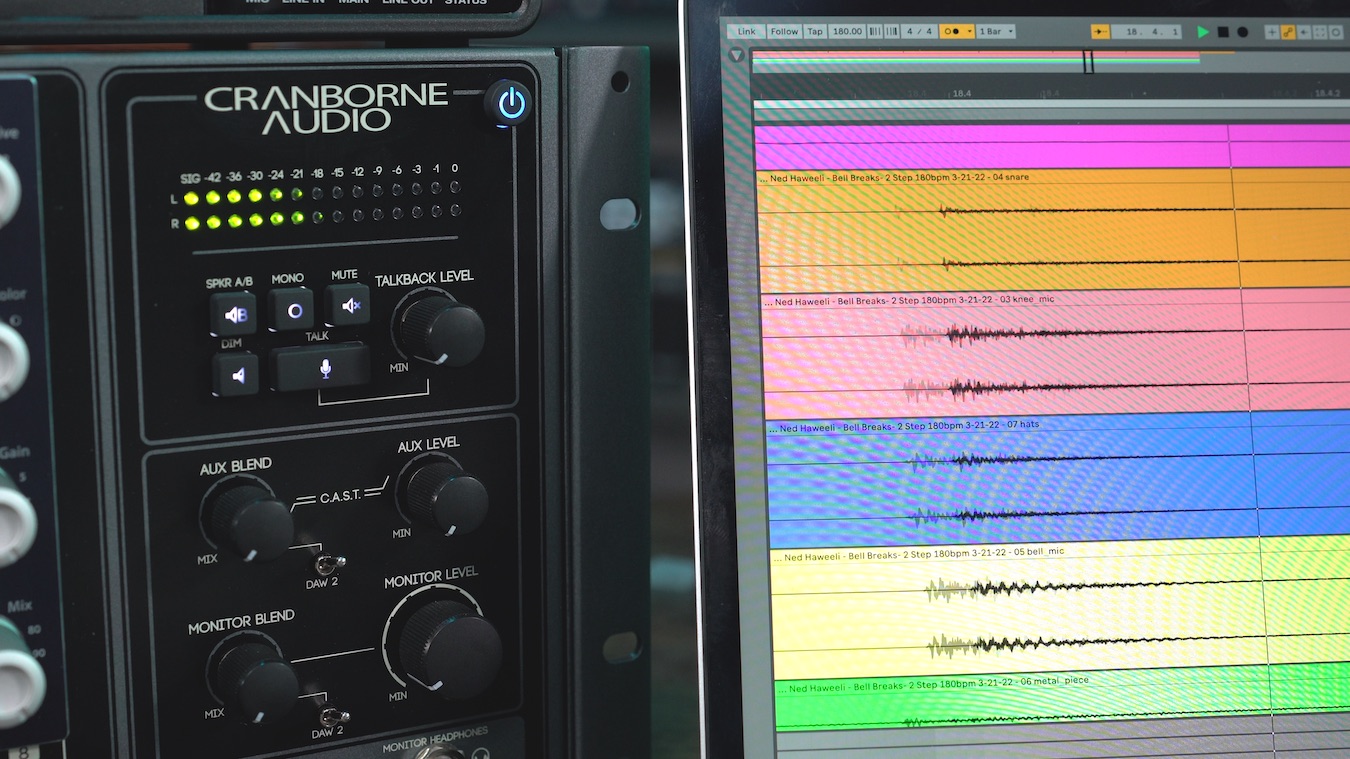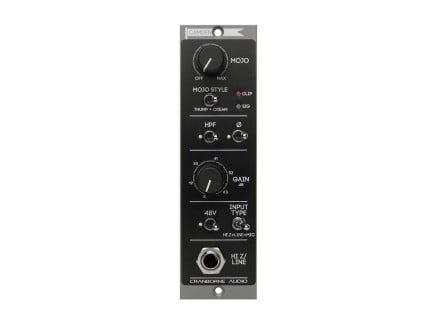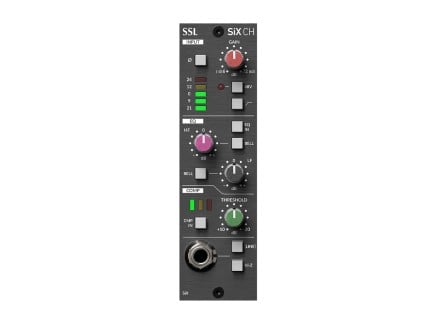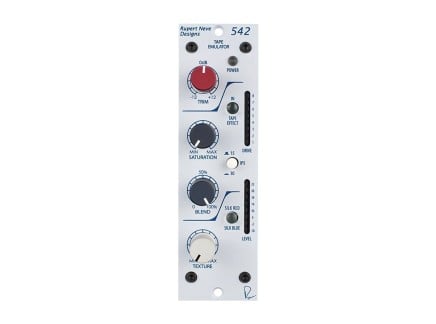We talk an awful lot about modular synthesizers over here...but it's time that we take a step back and talk about the other modular format: 500 Series. Of course, 500 Series modules provide the opportunity for professional studios to build highly customizable consoles and recording systems, but our interest lies primarily in what they can offer to home studios and working musicians.
There's more to it than simply grabbing a few modules and starting to record, though—to get the most out of 500 Series gear, you'll need a 500 Series module chassis, and you'll need to think about how best to connect it to your own audio interface. This article isn't going to go into depth discussing all of the ins and outs of 500 Series equipment—we'll get to that in a future article. For today, we're going to focus on a particularly interesting 500 Series chassis/interface solution that we suspect will suit all of you electronic musicians and home recording buffs particularly well: Cranborne's 500R8.
Before diving into the Cranborne 500R8 itself, though, let's take a quick look at the 500 Series format in general, and discuss how it might find a place in the workflows of home recording studios and electronic musicians.
500 Series: the Other Modular
500 Series is a modular format. I expect that most of our readers are likely familiar with modular synthesizers; however, despite being modular in nature, 500 Series modules aren't designed with synthesis in mind. Instead, they're a way of cobbling together a highly personal selection of processors for your recording studio.
Originally developed by API in the 1970s, the 500 Series format grew out of modular recording console concepts, in which individual channel preamps, equalizer, etc. could be easily removed/swapped for the sake of easy maintenance and signal flow customization. As time went on, though, it became apparent that 500 Series modules could easily stand on their own as a way of bringing the exact sound and performance of high-end studio processors to a compact, portable, and much more affordable footprint. Today, a wide variety of audio companies produce 500 Series modules, from API themselves to Solid State Logic, Rupert Neve Designs, and even adventurous effect manufacturers such as Meris.
So, how does a 500 Series setup usually work? Much like with modular synthesizers, you'll need some form of rack/housing/chassis: usually a 500 Series chassis will feature a built-in power supply. All 500 Series modules follow a specific standard for audio I/O connections, power requirements, power supply connector, and a specific standard for physical dimensions—meaning that any 500 Series module can be used in any 500 Series chassis. Modules simply slot into place, making contact with the chassis via an edge connector; this connects the modules to the internal power distribution system, and also connects them to the case's built-in audio I/O.
Unlike the realm of modular synthesizers, 500 Series modules typically do not feature any front-panel audio connections. Instead, they feature rear-panel audio connections, typically with a single XLR input and XLR output for each module space. It's common for these rear-panel I/O connections to be connected via XLR snakes to a patch bay for easy re-ordering of your signal flow.
Once you've sorted out how best to integrate this into your own studio setup, 500 Series modules make it possible for studios of any size to get the true sound of this high-end gear without needing to shell out the money for a full-on console, and it enables them to create a recording setup that works specifically for their needs. And let's face it...most home studios don't need a full analog console to get their work done, but they could take advantage of the unique sound and behavior of high-end mic preamps, compressors, effects, and more. But the simple fact is that many home project studios and electronic musicians may not have all of the other peripheral gear needed to make the most out of a rack full of 500 Series modules. Most studios that make use of 500 Series gear have their 500 Series chassis permanently connected to a patch bay, and a patch bay permanently connected to a many-input interface. The 500 Series gear might be used in the process of tracking, or might be used for processing tracks from the DAW farther down the line. But without a many-input/many-output interface, and without a handy patch bay, it can be difficult to make use of such a setup.
But Cranborne's 500R8 chassis offers a solution, a quite a brilliant one at that.
Cranborne 500R8: The Perfect 500 Series Rack for Electronic Musicians?
Cranborne's 500R8 is a 8-slot 500 Series chassis with integrated audio interface capability, a built-in analog summing mixer with multiple routing options, a monitor controller, headphone driver, and even talkback mic control capability. But why do you need a USB audio interface and a 500 Series chassis in the same device?
Well, there are a lot of reasons. Perhaps the most obvious is that treating a device like the 500R8 as your audio interface means that you can record audio through any frontend processing you please. You could have an interface with an API preamp on one channel, a Neve preamp on another, an SSL EQ on yet another, etc. Even if your musical practice doesn't involve using microphones, this can be a huge advantage for adding color, character, and depth to your synthesizers, drum machines, and more. However, what advantage would that pose for fully or partly in-the-box musicians?
This is where the 500R8's brilliance truly comes through. Looking closely at the chassis, you'll notice that below each 500 series module slot, there's a three-position signal source switch—allowing you to choose where the input for each channel comes from. This includes rear-panel CAST inputs (a proprietary signal routing system offered on many Cranborne products), Analog inputs (the typical XLR connectors on the rear panel), and—here's the kicker—USB. In fact, it is possible to send audio directly from your DAW into the individual channels of the 500R8, making it a breeze to use for reamping individual tracks, providing analog glue for your busses, and much more.
So, for fully in-the-box musicians, this means that you can make use of any 500 Series processors you please without the need for a separate many-in/many-out interface and patch bay. Simply by changing the audio output routing in your DAW, it becomes possible to send audio directly to any slot on the 500R8, and then to re-record...using only a single USB cable. In the video above, Wes demonstrates how this can play out on a mix of multitracked drum breaks and synth pads...and frankly, it makes it dead simple for DAW-centric musicians to access the sound, flexibility, and immediacy of studio-grade mixing/mastering/sound manipulation gear. If that's not cool, I don't know what is. In fact, you can use the built-in discrete summing mixer to create an analog sum of the signals sent from your DAW...dang.
Of course, there's more to 500R8 than all that—it also features an analog mixer with dedicated level and pan controls on each slot, making it easy to create artist mixes while tracking; it also offers a fully-featured monitor controller with mono sum, mute, dim, and even talkback facilities. It truly is designed to be able to act as the center of your recording workflow, acting as a full-fledged audio interface, summing mixer, monitor controller, and more...heck, it even has 5-pin MIDI I/O for getting MIDI control into and out of your computer.
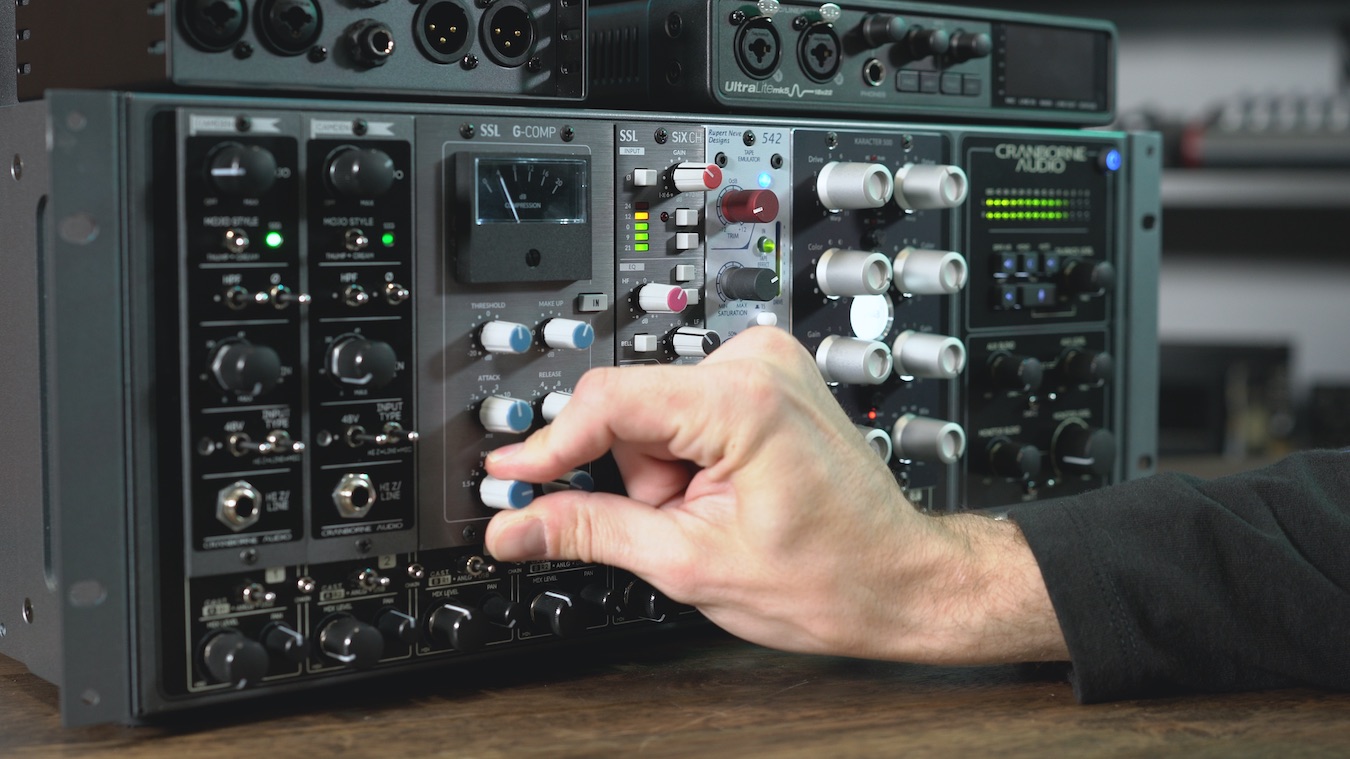
What's even crazier—when you're ready to expand, it also offers ADAT I/O. This means that you could add any set of additional ADAT-equipped preamps for extra inputs to your recording system, or alternatively, you could even add Cranborne's own 500ADAT: a 500 Series chassis which offers nearly all the same features as the 500R8, minus the USB connectivity. This allows for 16 channels of recording, 16 channels of summing, and all the additional benefits of expanded CAST connectivity.
Getting into everything that the 500R8 offers is way beyond the scope of this article, so I've focused on outlining features that will be particularly useful for electronic musicians and home recording studios. Suffice to say that it's an amazing piece of kit, and we'd recommend it to anyone looking to seriously upgrade their interface game, or for anyone looking to dip their toes into the wide world of 500 Series processing. Moreover, we'd like to stress again that this particular form factor makes 500 Series gear make a heck of a lot more sense for musicians who tend to work in the box. Opening up the possibilities of analog summing, reamping, and plenty more without needing the mess of additional cabling, patch bays, or other external gear, it should integrate into most electronic musicians' setups with ease. So, if you're an electronic musician or home recording enthusiast who's been curious about boutique pro audio but unsure how to get in the door...I think you should take a close look at Cranborne.



